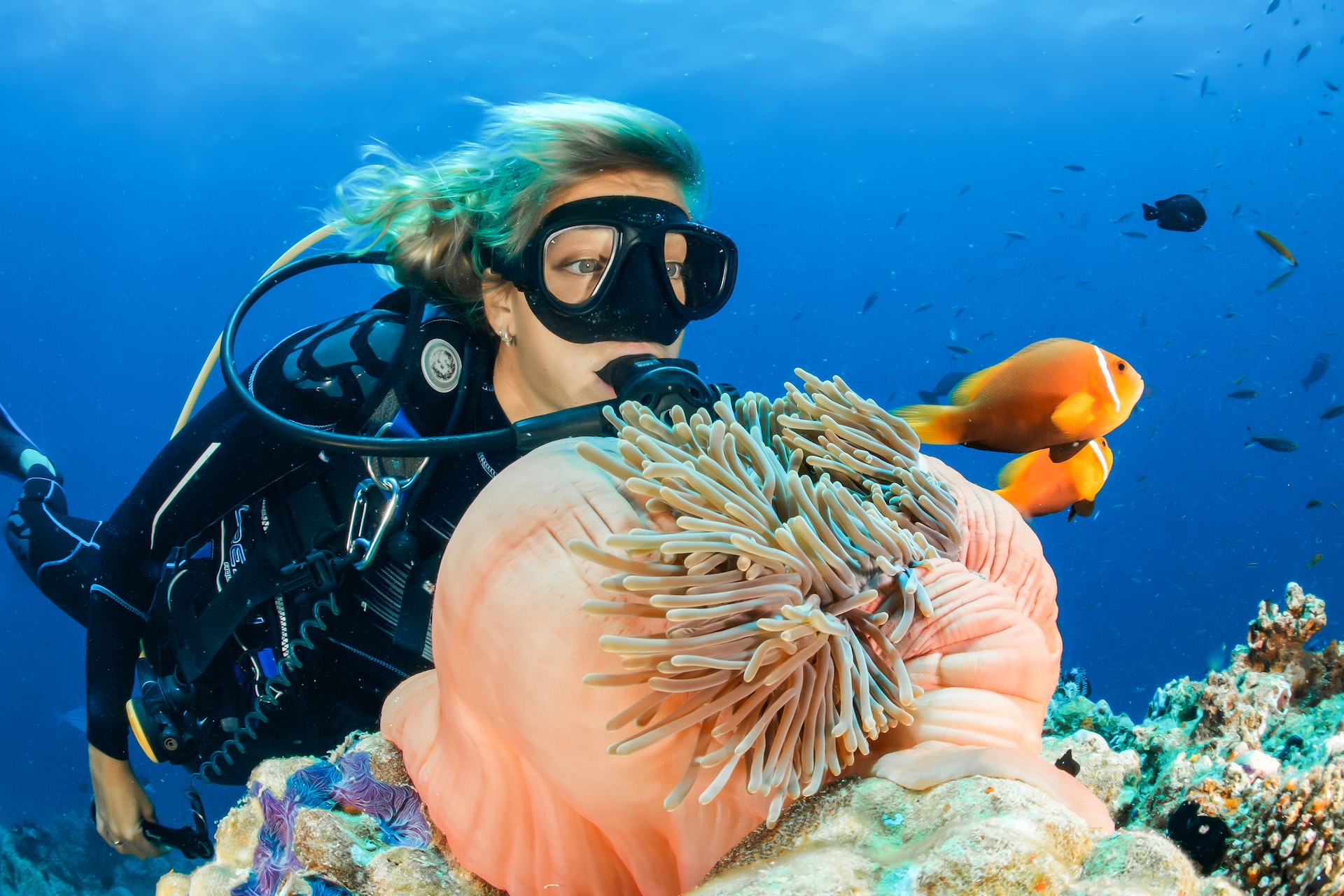
How to Protect Coral Reefs: 6 Tips
We are reader-supported. When you buy through links on our site, we may earn affiliate commission.
There are few scenes as breathtaking as a drone shot over a coral reef — a pristine, tranquil blue turquoise enshrouding an expanse of rocky terrain. From the sky, few can imagine the never-ending life teeming beneath the water’s surface.
Yet, coral reefs are one of the most endangered ecosystems, threatened by exacerbating global warming and humankind. Some might agree we’ve reached a point of no return in protecting these fragile habitats. Here’s everything you should know about how to protect coral reefs.
The Disappearing Act
Climate change and human activities — such as overfishing, pollution, coastal development and reduced water quality — have led to mass coral die-offs throughout the last few decades. The effects have wiped clean one of the most biologically diverse habitats and altered the marine environment.
In 2022, the Great Barrier Reef Marine Park Authority reported that 91% of Australia’s protected coral reefs — about 2,300 kilometers — were negatively impacted by above-average temperatures and subsequent bleaching.
Recently, researchers also determined that ocean warming at 1.5° Celcius would render it nearly impossible for 99% of coral reef recovery amid frequent heat waves.
Approximately 50% of living corals have disappeared since the 1950s, with a 63% decline in coral biodiversity. Losing our coral reefs poses dire social, environmental, and economic implications, particularly for coastal communities that rely on coral reefs for goods, services, and dietary needs.
A Tipping Point: How To Protect Coral Reefs
Ecological and anthropological stress induces the release of zooxanthellae in a coral’s tissue, making them more susceptible to bleaching. Corals can only regenerate after bleaching by re-absorbing the zooxanthellae — this can only occur by eliminating the environmental impact that caused the problem in the first place.
Humans are integral to coastal conservation. Knowing how to protect coral reefs often comes down to mitigating individual environmental influences. Here are six ways you can do your part in conserving this precious habitat.
1. Swim Responsibly
Scuba diving and snorkeling within coral reef regions is a popular recreational activity shared among many people. However, with corals having such a high sensitivity to touch, irresponsible diving practices can significantly harm these coastal marine habitats.
Scientists estimate that 88% of divers damage coral reefs at least once during each dive. In fact, one dive location could endure 200,000 harmful incidents annually — this usually occurs after making contact with scuba gear, divers chipping away at corals for keepsakes, or getting hit with boat anchors.
Unfortunately, corals that survive these incidents are less likely to survive other stressors imposed on them, such as rising temperatures and run-off pollution.
Follow proper scuba and snorkeling protocols to protect corals and avoid diving, swimming, and boating too closely to reef zones.
2. Avoid Toxic Sunscreens
Many sunscreens comprise chemicals that are toxic to coral reefs. For instance, avoid brands that include oxybenzone, benzophenone-1, and benzophenone-8, which can build up in coral tissue and cause a bleaching reaction.
Hawaii was the first state in the United States to ban sunscreens containing oxybenzone and octinoxate in 2018. Since then, individual Hawaiian islands have passed even more stringent laws and regulations against sunscreen wear.
In September 2022, Maui County issued a ban on non-mineral sunscreens — now, beachgoers may only use sunscreen products containing the minerals zinc oxide and titanium dioxide. In December, Hawaii County followed suit with a similar ban stricter than the statewide law.
3. Clean Up Debris
It’s no secret our oceans and beaches are littered with trash and plastics. Scientists have even discovered plastic in organisms’ digestive tracts at 10,975 meters deep within the Mariana Trench. Therefore, cleaning up debris makes a significant difference if you wonder how to protect coral reefs from further destruction.
Ocean pollution — plastic bags, fishing nets, bottles, and more — can latch onto corals and break off pieces. They may also reduce sunlight exposure required for photosynthesis and harm coral reef species that use the habitat as a nursery, shelter, and feeding ground.
For example, coral reef fish may consume microplastics, while plastic bottle rings may strangle and suffocate other reef organisms, like sea turtles.
4. Conserve Water
Conserving water at home can positively affect coral reef protection. Research has shown that sediment run-off from land alters reef metabolisms and their development, including sewage and landscaping fertilizers.
During a 2021 study, researchers found that 85% of 5,500 global coastal areas contain sediment loads from land pollutants. When water becomes clouded with high sediment concentrations, sunlight and coral survivability become inhibited.
Be mindful of the products you pour down your sink drains at home and the synthetic compounds used to enhance your lawn. Even everyday household cleaners and garden pesticides can eventually wreak havoc on coral reef ecosystems.
5. Buy Sustainable Seafood
A healthy coral habitat is a home to about one million aquatic species, including those we purchase from the grocery store. For those living within coastal communities, fishing within coral reefs is integral to economic prosperity and food security.
In 2017, the Dominican Republic issued a two-year ban on parrotfish — a popular seafood and delicacy in some parts of the world. Parrotfish are critical to maintaining healthy coral ecosystems, spending 90% of their time cleaning the reef and replenishing the sand on beaches.
When purchasing seafood at your local supermarket, inquire about where it comes from and its potential effects on coral reef health. You may be more inclined to buy something more sustainable, such as a deepwater or freshwater fish instead.
6. Educate Others
There’s power in knowledge and when it comes to determining how to protect coral reefs, educating others about what you know can profoundly impact the environment.
Making sound changes to your own ecological footprint for the benefit of healthy reefs sets an example for others to do the same. Understanding why coral reefs are essential habitats and relaying information to others can encourage a trickle effect of similar lifestyle changes.
It’s beneficial to coral ecosystems not to underestimate advocacy. Read books, participate in online forums and citizen science projects, and volunteer to further your outreach.
Protecting Coral Reefs Starts With You
If we lose our coral reefs, we’ve already lost too much. Living more sustainably, participating in ecologically-friendly recreational activities, and making more informed decisions about the products you buy all contribute to healthy marine environments.
Share on
Like what you read? Join other Environment.co readers!
Get the latest updates on our planet by subscribing to the Environment.co newsletter!
About the author
Steve Russell
Steve is the Managing Editor of Environment.co and regularly contributes articles related to wildlife, biodiversity, and recycling. His passions include wildlife photography and bird watching.





